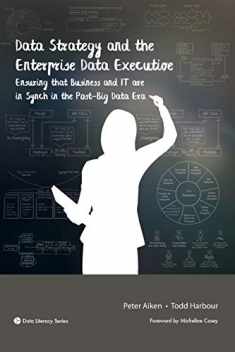
The Case for the Chief Data Officer: Recasting the C-Suite to Leverage Your Most Valuable Asset
Book details
Summary
Description
Data are an organization's sole, non-depletable, non-degrading, durable asset. Engineered right, data's value increases over time because the added dimensions of time, geography, and precision. To achieve data's full organizational value, there must be dedicated individual to leverage data as assets - a Chief Data Officer or CDO who's three job pillars are:
- Dedication solely to leveraging data assets,
- Unconstrained by an IT project mindset, and
- Reports directly to the business
Once these three pillars are set into place, organizations can leverage their data assets. Data possesses properties worthy of additional investment. Many existing CDOs are fatally crippled, however, because they lack one or more of these three pillars. Often organizations have some or all pillars already in place but are not operating in a coordinated manner.
The overall objective of this book is to present these pillars in an understandable way, why each is necessary (but insufficient), and what do to about it.


We would LOVE it if you could help us and other readers by reviewing the book
Book review




